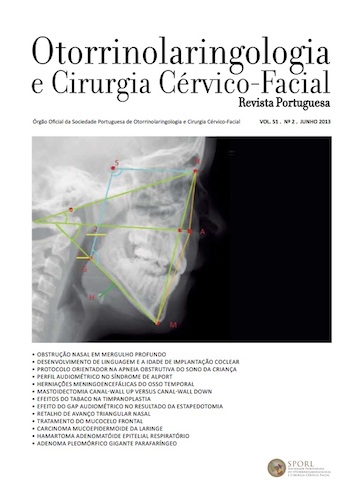Nasal obstruction in deep water diving
DOI:
https://doi.org/10.34631/sporl.15Keywords:
deep water diving, nasal obstruction, nasal peak flow, preventionAbstract
Introduction: Diving has become increasingly popular with time, with an increase of associated pathologies. This issue is especially important in deep diving, where there is less experience and absence of published data. The lack of information is even more concerning when dealing with professional military divers, who are at increased risk, given their higher exposure to diving and the specific nature of activities performed.
Material and Methods: We aimed to characterize the nasal airflow of military divers participating in an international diving exercise occurred in Portugal between September and October 2010, and performing daily deep dives.
Results: We studied 35 divers, submitted to a daily maximal inspiratory nasal flux measurement (nasal peak flow) and to a nasal congestion evaluation questionnaire, before and after each dive.
Conclusions: In a population mostly characterized by basal normal values, the global fall in the peak flow’s values points towards the need for close follow-up and planning of preventive strategies, in order to avoid accidents and provide better quality of life to this population.
Downloads
References
Spira A. Diving and marine medicine review part II: diving diseases. J Travel Med. 1999 Set; 6(3), 180-98.
Roydhouse N. 1001 disorders of the ear, nose and sinuses in scuba divers. Can J Appl Sport Sci. 1985 Jun; 10(2), 99-103.
Vera-Cruz P, Croca J, Zagalo C. Hyperbaric oxygen improves nasal air flow. Undersea Hyperb Med. 2009 May; 36(3):147-54.
Salah B, Xuan ATD, Fouilladieu JL, Lockhart A et al. Nasal mucociliary transport in healthy subjects is slower when breathing dry air. Eur Respir J. 1988 Oct; 1:852-855.
Proctor DF, Andersen I, Lundgvist GR. Human nasal mucosal function at controlled temperatures. Respir Physiol. 1977 Jun; 30(1-2): 109-24.
Branco-Ferreira M, Morais-Almeida M, Cardoso SM, Barros E et al. Congestão nasal em Portugal – epidemiologia e implicações. Revista Portuguesa Otorrinolaringologia e Cirurgia Cérvico-Facial. 2008 Set;
(3): 151-160.
Spronsen Ev, Ingels KJ, Jansen AH, Graamans K et al. Evidence-based recommendations regarding the differential diagnosis and assessment of nasal congestion: using the new grade system. Allergy. 2008 Feb;
:820-33.
Undersea and Hyperbaric Medical Society. http://www.uhms.org/ Acedido em Mar 27, 2011.
Bermüller C, Kirsche Hanspeter, Rettinger G, Riechelmann H. Diagnostic accuracy of peak nasal inspiratory flow and rhinomanometry in functional rhinosurgery. The Laryngoscope. 2008 Apr; 118(4): 605–610.
Starling-Schwanz R, Peake HL, Salome CM, Toelle BG et al. Repeatability of peak nasal inspiratory flow measurements and utility for assessing the severity of rhinitis. Allergy. 2005 Jun; 60: 795–800.
Wilson A. Airflow obstruction and peak nasal inspiratory flow (PNIF) – revision. 2003; www.clement-clarke.com/products/inspiratory_flow/in-check_nasal/pnif_review/index.html. Acedido em Abr 1, 2010.
Ottaviano G, Scadding GK, Coles S, Lund VJ. Peak nasal inspiratory
flow: normal range in adult population. Rhinology. 2006 Apr; 44(1):32-5.






